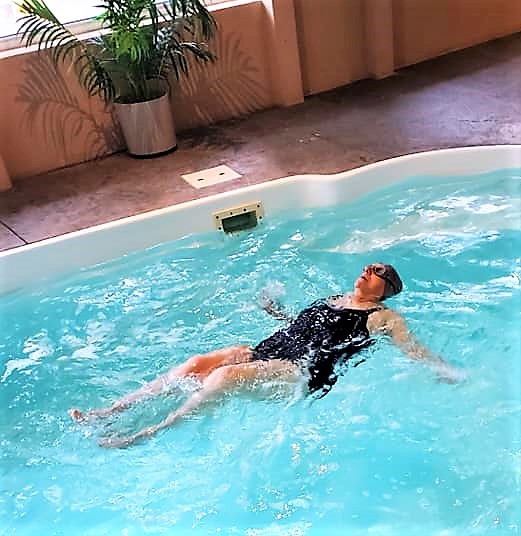Becoming a lifeguard is not just about watching over swimmers; it’s about being a protector, a lifesaver, and a leader. Whether you’re drawn to the water by passion or the desire to help others, lifeguard training is the crucial first step in your journey. If you’re searching for “Lifeguard Training Near Me,” this guide will provide you with everything you need to know, including the best practices, the types of courses available, and where to find top-notch training through the American Lifeguard Association.
Why Lifeguard Training Is Essential
Lifeguard training equips you with the skills and knowledge to prevent and respond to emergencies in aquatic environments. This training is vital because lifeguards must be prepared to handle a variety of situations, from minor injuries to life-threatening incidents. Proper training ensures that you can act quickly and effectively, making a significant difference in the safety and well-being of swimmers.
What to Expect in Lifeguard Training
Lifeguard training courses are comprehensive, covering a wide range of topics. Here’s what you can expect:
- Water Rescue Techniques: Learn how to approach and rescue swimmers in distress using various methods, including reaching assists, throwing assists, and swimming rescues.
- CPR/AED and First Aid: These are essential components of lifeguard training. You will learn how to perform CPR, use an Automated External Defibrillator (AED), and provide first aid for injuries such as cuts, burns, and fractures.
- Surveillance Skills: Lifeguards must maintain constant vigilance. Training will teach you how to effectively scan large areas of water, recognize potential hazards, and spot signs of distress.
- Legal Responsibilities and Ethics: Understanding your legal obligations and ethical responsibilities as a lifeguard is crucial. Training includes lessons on liability, duty to act, and the importance of maintaining professionalism.
- Physical Fitness: Lifeguard training requires a high level of physical fitness. You will undergo swimming tests, endurance exercises, and strength training to ensure you’re capable of performing rescues.
Finding Lifeguard Training Near You
When searching for lifeguard training near you, proximity is important, but quality should be your top priority. The American Lifeguard Association (ALA) is a leading provider of lifeguard certification courses, known for its rigorous training standards and experienced instructors.
Here’s how to find ALA-accredited lifeguard training near you:
- Visit the American Lifeguard Association Website: Start by visiting the ALA website. Here, you can use the course locator tool to find training programs in your area. Simply enter your location, and you’ll receive a list of nearby classes, along with details such as dates, times, and course fees.
- Check Local Community Centers and Pools: Many community centers, aquatic centers, and public pools partner with ALA to offer lifeguard training. Contact these facilities directly or check their websites for upcoming classes.
- Ask for Recommendations: If you know someone who has recently completed lifeguard training, ask for recommendations. Personal referrals can be invaluable in finding high-quality training.
The Benefits of ALA Certification
Choosing the American Lifeguard Association for your training comes with several benefits:
- Nationwide Recognition: ALA certification is recognized across the United States, making it easier to find employment as a lifeguard no matter where you live or move.
- Comprehensive Training: ALA courses are designed to cover all aspects of lifeguarding, ensuring that you’re fully prepared for the demands of the job.
- Experienced Instructors: ALA instructors are seasoned professionals with years of experience in aquatic safety. They provide hands-on training and real-world insights that go beyond textbook knowledge.
- Flexible Training Options: ALA offers a variety of training formats, including in-person, blended (online and in-person), and recertification courses. This flexibility allows you to choose the option that best fits your schedule and learning style.
Preparing for Your Lifeguard Training
Before enrolling in a lifeguard training course, it’s essential to prepare yourself both physically and mentally. Here are a few tips to get ready:
- Improve Your Swimming Skills: Lifeguard training involves extensive swimming, so it’s important to be comfortable in the water. Practice swimming laps, treading water, and holding your breath underwater.
- Focus on Physical Fitness: Lifeguarding requires strength, endurance, and agility. Incorporate cardiovascular exercises, strength training, and flexibility workouts into your routine to build the necessary fitness levels.
- Familiarize Yourself with CPR/AED Basics: While you’ll receive thorough training in CPR and AED use, having a basic understanding beforehand can give you a head start.
- Stay Informed: Read up on lifeguarding principles, water safety, and first aid. The more you know going into your training, the more confident you’ll feel.
Lifeguard Training Near Me: The Path to a Rewarding Career
Completing lifeguard training is not just a requirement—it’s a gateway to a fulfilling and impactful career. By choosing a reputable organization like the American Lifeguard Association, you’re investing in high-quality training that will prepare you for the challenges and rewards of lifeguarding.
Whether you’re looking to work at a local pool, a beachfront, or a water park, your training will give you the skills and confidence to succeed. So, don’t wait—start your journey today by searching for “Lifeguard Training Near Me” and enroll in an ALA-accredited course. Your commitment to safety and excellence will make a lasting difference in the lives of those you protect.







